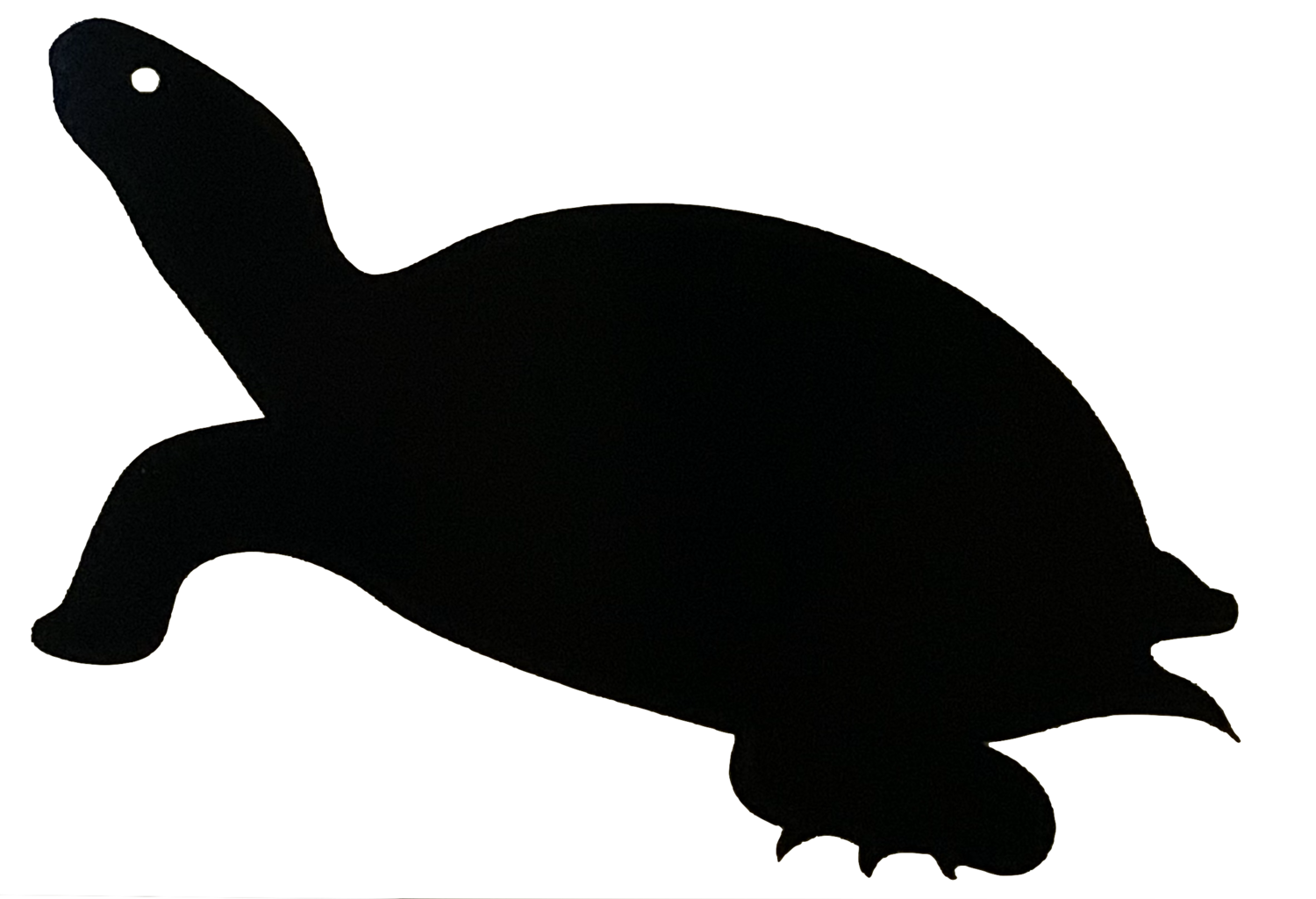Turtles of Kingston
Turtles in Kingston, Ontario
Southern Ontario is the place for turtles in Canada, with the greatest diversity of Canadian turtles living here. They can be found in a variety of habitats such as lakes, ponds, rivers, marshes, and bogs. Some species are very particular about where they live. Map turtles, for example, prefer larger rivers or lakes. Other species, such as the Painted turtles, can be found in a wider variety of habitats.
Wildlife in Canada is designated as Endangered, Threatened, Species of Special Concern, or Not at Risk. All 8 of Ontario’s turtles are listed as Species at Risk (Endangered, Threatened, or Species of Special concern). Kingston is home to 5 of the 8 Ontario turtle species.
Source: Ontario Turtle Conservation Centre
Common Snapping Turtle
(Chelydra serpentina)
The Snapping turtle is the largest freshwater turtle native to Ontario. Snapping turtles have a nasty disposition when on land as a result of a small belly plate (or plastron) that provides little protection to their exposed skin.
Snapping turtles are thought to live more than 100 years and take upwards of 20 years to reach sexual maturity. This, combined with low survival rate of eggs and hatchlings, is one reason the Snapping turtle is listed as a species of Special Concern.
In fact, it is estimated that it takes about 1500 eggs and 59 years to replace one lost adult Snapping turtle.
Clutch and Incubation Facts: 6-104 eggs that will hatch in 80-90 days
Turtles like wetlands. Canada contains more than 14% of the world’s wetland area, with most of those wetlands located in Ontario. Unfortunately, 70-90% of Ontario’s wetlands have disappeared due to development. This has led to serious fragmentation of the turtles’ habitat. Fragmentation of their homes means that both male and female turtles must cross the many roads that intersect their wetlands in search of food sources and potential mates.
Midland Painted Turtle
(Chrysemys picta)
Painted turtles are commonly found basking on logs in water bodies. They live in the water and will come onto land to nest and migrate.
Although you may have seen many painted turtles, they are still considered a species of Special Concern because of high road mortality rates that drastically impact their population numbers.
Clutch and Incubation Facts: 3-15 eggs that will hatch in 60-90 days, although hatchlings often overwinter in the nest (remain in the nest until spring).
The full turtle season in Ontario is from March to October. Nesting season (May to late July/early August) is when adult turtles are more likely to be travelling and on roads. During this time many turtles are killed and injured by vehicles as they cross the roads. Less than 1% of all turtle eggs will reach sexual maturity! The loss of any adult turtle is therefore a huge loss! The low egg survival rate means that it can take 59 years for a turtle to replace itself!
Blanding’s Turtle
(Emydoidea blandingii)
Blanding’s turtles are also known as the smiling turtle! These turtles are semi-aquatic and spend lots of time on land migrating between seasonal habitats. In fact, the home range of this turtle can be very large and can include several types of habitat.
Partially related to their need for a larger habitat and their tendency to migrate on land, these turtles are listed as Threatened in Ontario and Endangered in Nova Scotia.
Clutch and Incubation Facts: 4-13 eggs that will hatch in 60-90 days
Turtles do no harm and, in fact, are considered the ‘caretakers’ of our fresh water systems. They maintain the quality of water sources by consuming vast amounts of bacteria-producing carrion (decaying flesh), promoting stronger fish populations and a healthier environment for humans to enjoy. As species that spends time both in the water and on land, turtles act as a ’conduit’ of energy between terrestrial (land) and aquatic (water) ecosystems. Turtles are also considered a keystone species that other species rely on for survival. If our Ontario turtles were to disappear, ecosystems would change dramatically!
Eastern Musk Turtle (‘Stinkpot’)
(Sternotherus odoratus)
The Eastern Musk turtle is one of the world’s smallest turtles (<4 inches long). Due to its shy nature and love of water, the Musk turtle is seldom seen. They prefer shallow water with plenty of aquatic vegetation such as lily pads.
The Musk turtle is also known as a ‘Stinkpot’ since produces a musky, skunk-like odour when disturbed. This turtle species is listed as Special Concern.
Clutch and Incubation Facts: 2-5 eggs that will hatch in 60-90 days.
Turtles are one of the most imperilled group of vertebrate species on the planet. They have survived more than 220 million years, but in less than 50 years we have sent them down the road to their extinction.
Northern Map Turtle
(Graptemys geographica)
Northern Map turtles like large bodies of water in and around the Great Lakes where they eat crustaceans and mollusks. Similar to Painted turtles, the Northern Map turtle enjoys basking on logs.
The Northern Map turtle is listed as Special Concern.
Clutch and Incubation Facts: 7-23 eggs that will hatch in 60-90 days, although hatchlings often overwinter in the nest (remain in the nest until spring).





